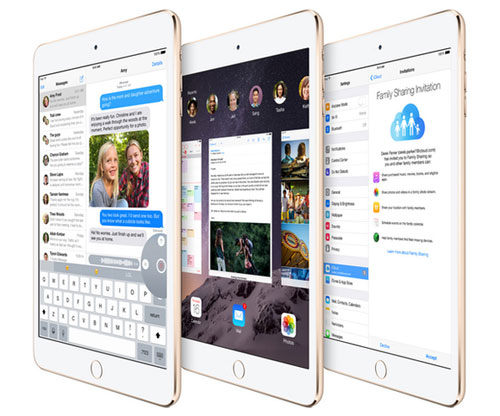Apple’s dug itself into a hole with the iPad, but now is the time to change everything (again).
We’ve got a big fall ahead of us. New versions of iOS and OS X. As ever, a new iPhone (or iPhones). A new Apple TV. But for the first time in a while, it’s the iPad that seems to be getting a lot of the attention and rumormongering.
Part of that is the tablet’s contentious place in Apple’s lineup. The general perception is that the iPad isn’t doing well, with dwindling sales growth, an increasingly unclear niche, and lackluster improvements. I agree with my esteemed colleague Mr. Snell that many of these problems are overstated, and the iPad isn’t about to tank.
But in some ways, Apple has dug itself into a hole with the iPad. It’s not a bottomless pit, or even a chasm with walls so steep that the company can’t clamber out, but it does present some challenges.
The long now
The upgrade cycle has been repeatedly suggested as one of the major reasons for declining growth in iPad sales. Either users of older devices aren’t buying new ones yet, or they’re not planning on buying new ones at all.
Case in point: The other day, I got into a discussion with a friend, who lamented that his iPad 2 running iOS 8 wasn’t good for much, even when all he wanted to do was browse the web or view PDFs. He was disappointed that, for all he had paid for the device, it could no longer function the way it used to, which he attributed to “forced obsolescence.”
Thing is, there’s nothing “forced” about it. It’s just genuine, good old-fashioned, straight-up obsolescence. The iPad 2 was the second generation of a brand-new product category that was set for rapid evolution. (Remember the iPad 3, whichwas replaced a scant six months later with the fourth-generation iPad?)
The heart of the problem for users of those older devices is that surprising longevity of Apple’s products. The company continues to maintain software support for its long-in-the-tooth devices—but just because you can install the latest and greatest operating system on a device doesn’t mean it will work well. And it’s not surprising that Apple isn’t going to spend the time ensuring that its newest software runs smoothly on hardware from four or five years ago. From a purely business perspective, those customers have already made their purchase.
Of course, there we enter a Catch–22 scenario. Because if you don’t update to the newest OS, you won’t just be missing features—you’ll also increasingly encounter apps that simply won’t run on the older OS. Apple pushes developers to embrace its newest technologies, which often means raising requirements to the most recent OS. So even if your older device works, it may not do everything you want it to do, whether you update the OS or not. But replacing the entire device can be prohibitively expensive, since you can’t get subsidies on iPads.
Stuck in the middle
It’s also clear that the iPad, originally pitched as the future of computers, has stagnated in a no-man’s land, lacking both the convenience of a smartphone and the power of a Mac, the best of neither world.
To borrow a sentiment from John Gruber, the iPad has a tough time because in some ways it’s competing both with the iPhone, a truly blockbuster product, and the Mac, which has a strong, devoted user base and a long history. That’s a tough channel to navigate.
I suspect that a big part of why we’re hearing so many rumors about the iPad Prois that Apple is trying hard to find a way to broaden the appeal of the iPad andreduce its competition. Because a 12-inch iPad doesn’t compete in the same space at all as an iPhone, so it becomes merely a comparison between the tablet and a laptop. (Granted, the slim and powerful MacBook will provide stiff competition.)
It also helps explain why, as rumors suggest, an iPad Air 3 may not be immediately forthcoming. The iPad Air 2 is already an extremely powerful device that’s ahead of the curve for what it’s being asked to do—developers I’ve talked to have been impressed by just how much it’s capable of. Introducing a new iPad mini that comes closer to the Air 2’s specs and an iPad Pro with a larger screen not only makes those devices stronger contenders on their own, but also potentially spares Apple from getting too much flack if it skips a year of “standard” iPad updates.
I think Apple would like to be freed from feeling that it has to update the 9.7-inch iPad—or any iPad, for that matter—each and every year. That trap has exacerbated the speed of obsolescence for preceding generations, while often providing only meager updates, like the iPad mini 3.
So don’t be shocked if October comes around and the iPad lineup isn’t quite what we’ve grown accustomed to. Apple’s not about to kill of the iPad, but it does need to put the product line’s best foot forward if it wants to present a truly compelling argument to customers.
Source: www.macworld.com





